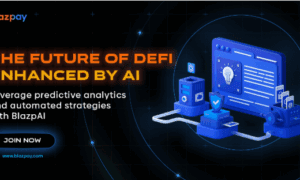Business process automation is a powerful catalyst for transformational change in today’s economy, providing enterprises with time and human factor reductions and end-to-end digital pipelines with integrated KPI metrics. This ultimately improves their operational efficiency and enhances their competitive advantage in the global marketplace. Meanwhile, traditional contract management systems based on heavyweight, monolithic platforms with server-side rendering exhibited significant limitations: rigid internal structure prevented flexible scaling, slow rework cycles created technical debt, and narrow module specialization prevented rapid adaptation to new regulatory requirements and volatile market conditions.
Danylo Sereda stands out in this paradigm of urgent need for innovation. He is Frontend Developer in the digital transformation of contract management, whose vision has moved from a monolith to a distributed microservice architecture with well-defined API contracts and built-in mechanisms for automated monitoring and scaling. In this interview, Danylo discussed how business process automation has become a growth factor for large companies.
– The first question that many people are interested in is how the idea of gradual migration from a monolithic architecture to a system with single-page application support came about, and what stages of implementation do you distinguish in this process?
- The idea of migration originated from the need to address the problem of long document reconciliation times in legacy systems. I suggested using a phased migration strategy, which allowed us to replace monolithic server rendering with a client-oriented architecture based on Vue.js and the use of a mono repository. The main stages were the identification of critical modules, their updating, integration with modern technologies, and gradually expanding functionality. This approach allowed us to minimize risks and ensure the continuity of business processes.
– Working in the IT-sphere for over 8 years, what challenges did you face when optimizing the platform performance, and how did you overcome them?
– The main challenge was redesigning data processing to reduce latency under high loads. We implemented optimization techniques and SPA architecture, which allowed us to ensure high work speed with large amounts of data.
– How do you assess the strategic and technological significance of Agiloft’s, which is a leading provider of contract lifecycle management solutions that automate workflows, reduce nonconformity risks, and optimize contracting processes, transition from a traditional monolithic server rendering architecture to a modular system with client-side support as part of its comprehensive modernization?
– Using a phased migration methodology with simultaneous integration of Vue.js-based components allowed us to reduce the risks associated with system modernization and ensure a smooth, almost imperceptible transition to the new technical solution. This approach helped to minimize possible failures and ensured the stability of processes in the context of the ongoing transformation of the system architecture. In addition, performance optimization was an essential part of this transition, achieved by rethinking data processing principles and reducing time delays in the system. As a result, the following significant achievements were realized: the front-end architecture was modernized with enhanced modularity and performance, accelerating release cycles by 15% and laying the foundation for future growth; WCAG 2.1 AA compliance was achieved to enable entry into major regulated markets; features were implemented that doubled daily user engagement and drove double-digit growth in annual recurring revenue, reinforcing Agiloft’s leadership position in the Contract Lifecycle Management market; and processes and staffing were optimized―development cycle time was reduced by 25%, and targeted hiring increased team productivity by 15%.
– How would you characterize the overall contribution of your innovative solutions to the contract management industry?
– As part of the modernization of the Agiloft platform, I implemented initiatives that improved the efficiency and transparency of business processes, which in turn helped set new industry standards. My contribution was to develop a strategy to reorganize the department’s internal processes. This approach involves optimizing all levels of communication, improving decision-making procedures, and constantly updating working practices, which is the key to sustainable adaptation to the changing conditions of modern business.
Agile methodologies have become essential for ensuring a timely response to external and internal challenges, allowing us to react quickly to market dynamics. In the long term, this approach will contribute to the digitalization of the industry, optimization of development processes, and strengthening of inter-team cooperation, which together will create a solid basis for building competitive advantages at the global level.
The introduction of systematized code quality control procedures was of additional importance, which reduced the risk of errors and laid down principles that contributed to the formation of uniform standards. These standards can serve as a model for further adaptation by other companies and departments, emphasizing the cross-industry effect of innovative changes.
– How does using AI algorithms in the Agiloft system affect the quality of contract management?
– The use of advanced AI algorithms in the Agiloft infrastructure leads to a reduced reliance on human involvement, which transforms traditional management models. The application of these intelligent solutions opens up the possibility of reconfiguring the decision-making process through the introduction of adaptive optimization mechanisms and the automation of routine operations, which reduce the probability of errors to minimal values.
This technological shift changes the existing paradigm of interaction with the system. It forms a solid methodological basis for the future development of contract management, facilitating the transition to stable and efficient business practices.
– What is the universality and repeatability of the methodologies you have developed within the framework of the project, and how can they be adapted in other industries?
– The proposed phased migration methodology within a modular architecture ensures the secure and incremental transformation of legacy systems while preserving their flexibility and scalability, adapting to the requirements of diverse sectors—from contract management and finance to manufacturing and public administration. Thanks to the universality of this approach, risks associated with the adoption of new technologies can be minimized, information-system functionality optimized, and component integration guaranteed, thereby enhancing managerial effectiveness, accelerating business processes, and facilitating the implementation of innovative solutions across economic sectors.
– Considering that the BrainTech Award 2024 is one of the most prestigious professional competitions in our field—and that the “Best Front-end Engineer” title is reserved for those who demonstrate outstanding leadership in front-end architecture and AI-driven solutions—what core principles do you follow when designing a front-end architecture that simultaneously delivers scalability, peak performance, and cutting-edge innovation at both the AI engine and UI levels?
– My methodology is based on three interrelated principles:
- Contract-First Design. Strictly defining contracts between microservices and front-end components helps minimize unexpected regressions when adding new features. APIs should be described not just through Swagger/OpenAPI, but supplement contracts with formal type specifications (TypeScript interfaces, JSON Schema), which enables type autogeneration on the front-end and validation at early build stages.
- Asynchronous composition and lazy loading. I use modular loading (Webpack Module Federation) for front-end architecture, bringing parts of the UI out as separate micro-fronts. This reduces initial payload, increases the speed of critical area mapping (First Contentful Paint), and gives teams autonomy in releases without affecting the overall monolith.
- Integration of AI components through adaptive middleware layers. I designed the frontend layer so that intelligent services—NLP engine for analyzing input data, recommendation systems, or predictive analytics—can be “plugged in” anytime without reworking the UI. For this purpose, “Decorator” and “Observer” patterns are used, as well as “feature flags” that allow ML functionality to be rolled out gradually in production.
These approaches together provide a balance of fast interface responsiveness, ease of maintenance, and the ability to innovate.
– Could you confirm or deny that you were invited to join the the oustanding Hackathon Raptors association, where talented and experienced professionals from leading companies – Google, Microsoft, Amazon, Meta, NVIDIA, Tesla, Zoom and other technology giants – showcase and integrate their amazing ideas and skills, laying the foundation for groundbreaking innovations?
In response to your question, I have indeed been invited to become a member of the Raptors Hackathon association, and I am pleased to join them. My candidacy is also under consideration, which is designed to bring together leading industry experts presenting projects distinguished not only by innovative engineering solutions, but also by a deep engagement with contemporary technological challenges. I believe my being considered for this role was made possible by my outstanding projects, as a rigorous expert selection process was conducted based on a comprehensive evaluation of scientific novelty and the practical significance of the results.





























